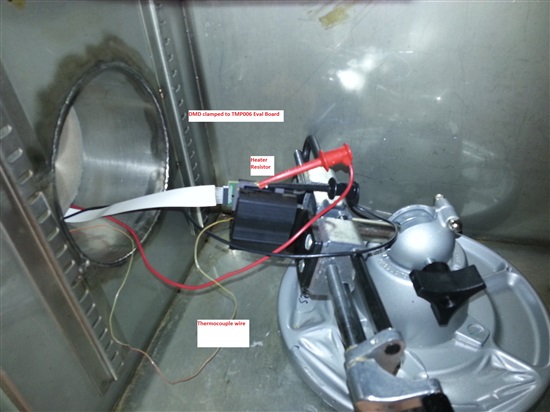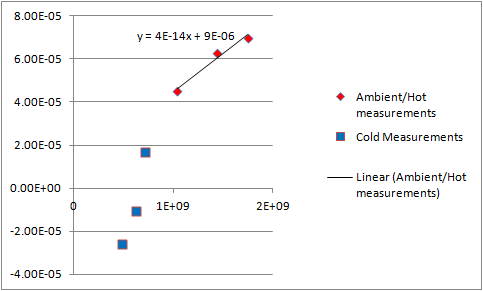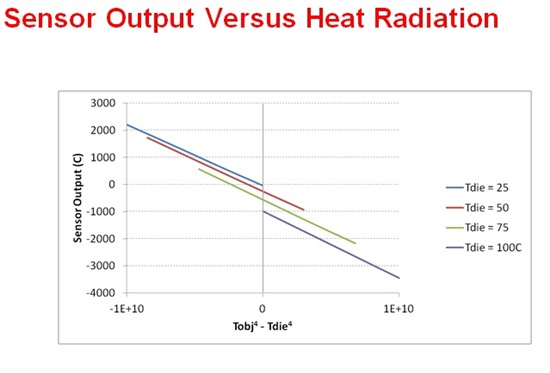My TMP006 EVM is giving me poor accuracy at -40C ambient temperature, but the accuracy greatly improves at ambient to hot temperatures. Please see the EVM software screenshots I've uploaded to my files.
My setup is as follows: The TMP006 EVM is clamped to view the back side of a Series 450 DMD (the gray ceramic package) at a distance of about 1/8". I have glued a surface mount resistor to the edge DMD to act as a heater, and I'm running the heater at a little under 1W. There is a thermocouple on the opposite side of the DMD from the TMP006's viewing area. The resistor heater is an equal distance from the TMP006 test point and the thermocouple test point. The whole setup is inside a temp chamber (I used the extender ribbon cable so the USB interface board is outside the temp chamber). This setup allows me to heat the DMD to about 10C hotter than the temp sensor PCB or the ambient temperature. I can move the ambient temperature to wherever I want by setting the temperature chamber.
Accuracy is within about 2 C (thermocouple measurement vs TMP006 measurement) for ambient temperatures from 10C to 70C. At colder temperatures, accuracy starts to drop, so at a -40C ambient the thermocouple reads -30C and the TMP006 object temperature reads -50C for an error of about 20C.
Please let me know any suggestions for debugging this further or if I am somehow violating a spec of the part or the EVM.
Thanks,
Arthur




